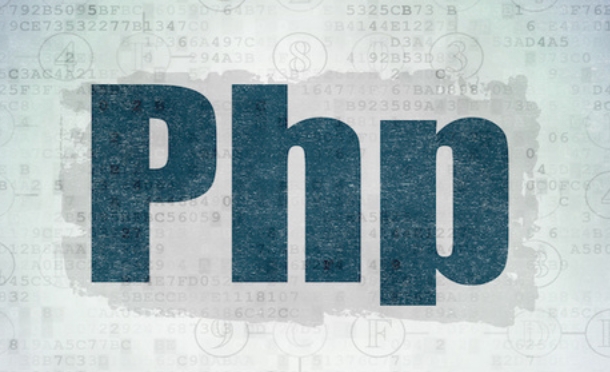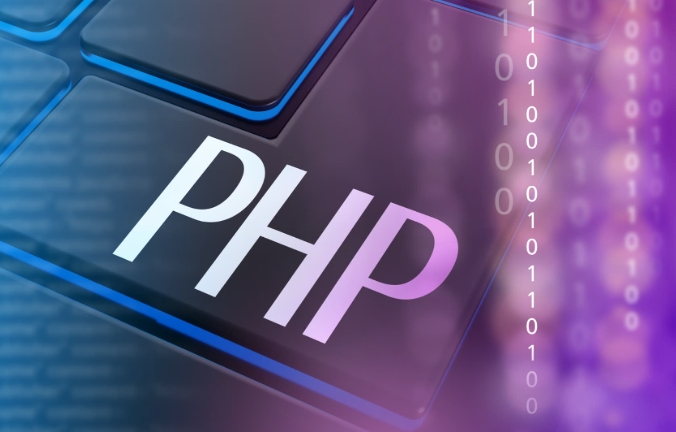When building a PHP environment, the key steps for database integration are as follows: 1. Install MySQL or MariaDB and run a secure initialization script to set the root password, etc.; 2. Use PDO or mysqli to extend the connection to the database. It is recommended to enable pdo_mysql and restart the web server; 3. Write a test script to verify whether the connection is successful; 4. Troubleshoot common problems such as service running status, user permissions, remote access configuration, and PHP error logs. Follow these steps and check the details to ensure the database is successfully integrated into the development environment.

Integration of databases (MySQL or MariaDB) is a key step when building a PHP environment. PHP alone is not enough, most projects need to cooperate with the database to achieve data persistence. The following starts with several common links and talks about how to integrate the database into your development environment smoothly.

Install MySQL or MariaDB
Before you begin, make sure you have installed the database service. MySQL and MariaDB use are almost the same, you can choose according to your preferences. For example, on Ubuntu:

-
Install MySQL:
sudo apt update && sudo apt install mysql-server
Install MariaDB:

sudo apt install mariadb-server
After the installation is completed, remember to run the security initialization script ( mysql_secure_installation or mariadb-secure-installation ), set the root password, delete anonymous users, etc. to avoid security risks.
How to connect to a database in PHP?
PHP To connect to a database, you usually use PDO or mysqli extensions. Both are available, PDO supports more database types, and new projects are recommended to be preferred.
Make sure that your PHP has the corresponding extension enabled. For example, uncomment in php.ini :
extension=pdo_mysql
Then restart your web server (such as Apache or Nginx) to make the configuration take effect.
To test whether the connection is normal, you can write a small script:
<?php
$host = '127.0.0.1';
$db = 'test_db';
$user = 'root';
$pass = 'your_password';
try {
$pdo = new PDO("mysql:host=$host;dbname=$db", $user, $pass);
echo "Connected successfully!";
} catch (PDOException $e) {
echo "Connection failed: " . $e->getMessage();
}If the output "Connection is successful", it means that the connection between the database and PHP is fine.
Frequently Asked Questions
Sometimes it seems all right, but it just can't connect. Check the following suggestions:
- Is the database service running?
- You can use
systemctl status mysqlorsystemctl status mariadbto view the status.
- You can use
- Are the user permissions correct?
- Set access using
GRANT ALL PRIVILEGES ON test_db.* TO 'username'@'localhost';
- Set access using
- Are remote connections allowed?
- If you are developing locally, you generally don't have to worry about this; but if you are a remote server, you need to modify the
bind-addressconfiguration and open the firewall port.
- If you are developing locally, you generally don't have to worry about this; but if you are a remote server, you need to modify the
- Is there any error in the PHP error log?
- Check the
error_reportingandlog_errorssettings inphp.ini. Opening the log can help you locate problems faster.
- Check the
Basically that's it. Although database integration is not complicated, it is easy to get stuck due to problems with permissions, configuration or service status. As long as you check it step by step, it can basically be solved.
The above is the detailed content of PHP environment setup: database (MySQL/MariaDB) integration. For more information, please follow other related articles on the PHP Chinese website!

Hot AI Tools

Undress AI Tool
Undress images for free

Undresser.AI Undress
AI-powered app for creating realistic nude photos

AI Clothes Remover
Online AI tool for removing clothes from photos.

Clothoff.io
AI clothes remover

Video Face Swap
Swap faces in any video effortlessly with our completely free AI face swap tool!

Hot Article

Hot Tools

Notepad++7.3.1
Easy-to-use and free code editor

SublimeText3 Chinese version
Chinese version, very easy to use

Zend Studio 13.0.1
Powerful PHP integrated development environment

Dreamweaver CS6
Visual web development tools

SublimeText3 Mac version
God-level code editing software (SublimeText3)
 PHP Variable Scope Explained
Jul 17, 2025 am 04:16 AM
PHP Variable Scope Explained
Jul 17, 2025 am 04:16 AM
Common problems and solutions for PHP variable scope include: 1. The global variable cannot be accessed within the function, and it needs to be passed in using the global keyword or parameter; 2. The static variable is declared with static, and it is only initialized once and the value is maintained between multiple calls; 3. Hyperglobal variables such as $_GET and $_POST can be used directly in any scope, but you need to pay attention to safe filtering; 4. Anonymous functions need to introduce parent scope variables through the use keyword, and when modifying external variables, you need to pass a reference. Mastering these rules can help avoid errors and improve code stability.
 How to handle File Uploads securely in PHP?
Jul 08, 2025 am 02:37 AM
How to handle File Uploads securely in PHP?
Jul 08, 2025 am 02:37 AM
To safely handle PHP file uploads, you need to verify the source and type, control the file name and path, set server restrictions, and process media files twice. 1. Verify the upload source to prevent CSRF through token and detect the real MIME type through finfo_file using whitelist control; 2. Rename the file to a random string and determine the extension to store it in a non-Web directory according to the detection type; 3. PHP configuration limits the upload size and temporary directory Nginx/Apache prohibits access to the upload directory; 4. The GD library resaves the pictures to clear potential malicious data.
 Commenting Out Code in PHP
Jul 18, 2025 am 04:57 AM
Commenting Out Code in PHP
Jul 18, 2025 am 04:57 AM
There are three common methods for PHP comment code: 1. Use // or # to block one line of code, and it is recommended to use //; 2. Use /.../ to wrap code blocks with multiple lines, which cannot be nested but can be crossed; 3. Combination skills comments such as using /if(){}/ to control logic blocks, or to improve efficiency with editor shortcut keys, you should pay attention to closing symbols and avoid nesting when using them.
 How Do Generators Work in PHP?
Jul 11, 2025 am 03:12 AM
How Do Generators Work in PHP?
Jul 11, 2025 am 03:12 AM
AgeneratorinPHPisamemory-efficientwaytoiterateoverlargedatasetsbyyieldingvaluesoneatatimeinsteadofreturningthemallatonce.1.Generatorsusetheyieldkeywordtoproducevaluesondemand,reducingmemoryusage.2.Theyareusefulforhandlingbigloops,readinglargefiles,or
 Tips for Writing PHP Comments
Jul 18, 2025 am 04:51 AM
Tips for Writing PHP Comments
Jul 18, 2025 am 04:51 AM
The key to writing PHP comments is to clarify the purpose and specifications. Comments should explain "why" rather than "what was done", avoiding redundancy or too simplicity. 1. Use a unified format, such as docblock (/*/) for class and method descriptions to improve readability and tool compatibility; 2. Emphasize the reasons behind the logic, such as why JS jumps need to be output manually; 3. Add an overview description before complex code, describe the process in steps, and help understand the overall idea; 4. Use TODO and FIXME rationally to mark to-do items and problems to facilitate subsequent tracking and collaboration. Good annotations can reduce communication costs and improve code maintenance efficiency.
 Learning PHP: A Beginner's Guide
Jul 18, 2025 am 04:54 AM
Learning PHP: A Beginner's Guide
Jul 18, 2025 am 04:54 AM
TolearnPHPeffectively,startbysettingupalocalserverenvironmentusingtoolslikeXAMPPandacodeeditorlikeVSCode.1)InstallXAMPPforApache,MySQL,andPHP.2)Useacodeeditorforsyntaxsupport.3)TestyoursetupwithasimplePHPfile.Next,learnPHPbasicsincludingvariables,ech
 How to access a character in a string by index in PHP
Jul 12, 2025 am 03:15 AM
How to access a character in a string by index in PHP
Jul 12, 2025 am 03:15 AM
In PHP, you can use square brackets or curly braces to obtain string specific index characters, but square brackets are recommended; the index starts from 0, and the access outside the range returns a null value and cannot be assigned a value; mb_substr is required to handle multi-byte characters. For example: $str="hello";echo$str[0]; output h; and Chinese characters such as mb_substr($str,1,1) need to obtain the correct result; in actual applications, the length of the string should be checked before looping, dynamic strings need to be verified for validity, and multilingual projects recommend using multi-byte security functions uniformly.
 Quick PHP Installation Tutorial
Jul 18, 2025 am 04:52 AM
Quick PHP Installation Tutorial
Jul 18, 2025 am 04:52 AM
ToinstallPHPquickly,useXAMPPonWindowsorHomebrewonmacOS.1.OnWindows,downloadandinstallXAMPP,selectcomponents,startApache,andplacefilesinhtdocs.2.Alternatively,manuallyinstallPHPfromphp.netandsetupaserverlikeApache.3.OnmacOS,installHomebrew,thenrun'bre







